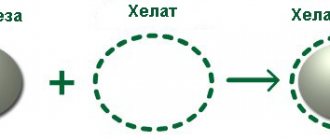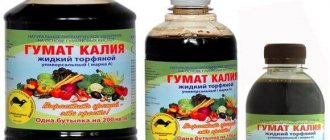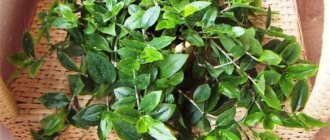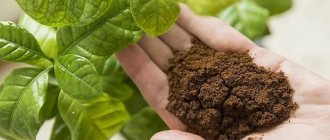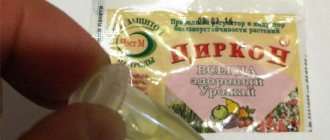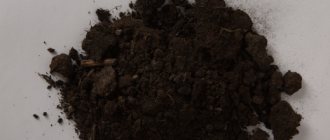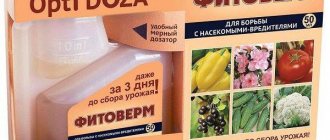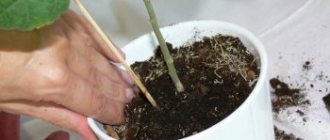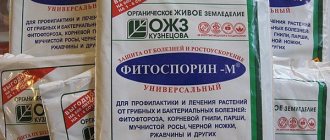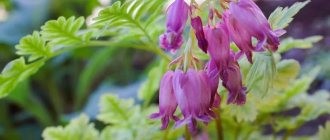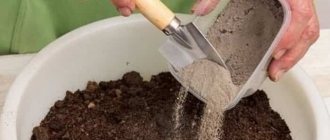Plants require no less care than animals. Only at first glance, it seems that there is nothing complicated, and gardening or indoor flowers is simple. In fact, it is required to fertilize and feed with various minerals and vitamins. At the same time, take into account the soil structure and plant preferences.
The preparation zircon is an indispensable substance for eliminating stress in crops, both garden and indoor. At the same time, the substance creates a model for protecting and enhancing the effects of fertilizers (chemical, biological). When added to water for bouquets, zircon retains the fragrance and freshness of flowers for a long time.
Composition and properties of Zircon
Zircon for plants is an immunomodulator that not only helps restore protective functions, but also stimulates rapid development and growth. Suitable substance for:
- garden flowers;
- indoor plants;
- vegetable and fruit and berry crops.
The chemical composition is rich in useful substances and minerals. This included macro- and microelements. And:
- hydroxycinnamic acids (HCAs);
- sulfur and magnesium;
- potassium and nitrogen;
- phosphorus.
The specified list of substances is basic. Their content is maximum. The description of GKK includes not one acid, but several at once: caftaric, chicory, gene. They are obtained by squeezing Echinacea purpurea (Asteraceae family).
To strengthen all components. Alcohol is also added as a preservative. Thanks to it, all substances are stabilized. Excellent dissolution, high penetration into the body. Since the percentage of alcohol is small, it has a stimulating effect on vegetation. The only negative is the presence of Zircon’s characteristic odor.
The color of the drug is yellowish, there is a slight greenish tint. Depending on the manufacturer, it may have a light yellow color.
Instructions for use of the drug Zircon
Each drug intended for use in private household plots is accompanied by instructions for use. It details how to prepare the solution, how and under what crops to apply it.
How to properly obtain Zircon solution
To prepare the solution you will need a plastic container, enamel dishes and water (it should be cool, temperature within 20°C). Before diluting Zircon, the ampoule must be shaken.
Sequencing:
- Pour 1/3 of the water into the container.
- Add the drug in the dosage specified in the instructions.
- Add water to the required volume.
- Stir until the solution is homogeneous.
Use on the day of preparation.
We recommend reading
Instructions for use of the drug Epin extra
Instructions for using succinic acid for plants
How to use boric acid in the garden
Rules for the use of copper sulfate in gardening
Dosage and methods of application for different purposes
Depending on what the drug will be used for, the dosage and method of application change.
For soaking seeds
To improve seed germination, accelerate growth and strengthen seedlings, you can soak the seed material in a solution of the drug in the spring, before sowing. For soaking vegetable seeds, with the exception of cucumbers, a dosage of 10 drops per 1 liter is suitable. The seeds are kept in this liquid for 2-4 hours. The solution for cucumbers should be 2 times less concentrated.
Flower seeds are also kept for 2-4 hours, but the dosage of the drug is increased to 30-40 drops per 1 liter. You can also treat seed potato tubers before planting them in the ground. Potatoes are sprayed with liquid from 20 drops. for 1 l. This volume should be enough for 100 kg of tubers.
To stimulate root formation in cuttings, you will need a liquid of 10-20 drops of Zircon per 1 liter. The cuttings are left in it for 0.5 days. The bulbs are soaked for a whole day. You need to dissolve 40 drops (for gladioli 20) in 1 liter.
For seedlings
Spray already grown plants after they have 2-3 leaves. A weak solution for spraying is prepared by dissolving 0.1 ml in 1 liter.
For tomatoes
Plants are sprayed with a liquid of 4 drops per 1 liter 4 times a season. Used for seedlings after planting and for adult bushes after the formation of the 1st, 2nd and 3rd cluster.
For cucumbers
The solution is the same as for tomatoes. But the treatment is done after the appearance of 3 leaves and when the buds are thrown out.
For strawberries
For this culture, you need to dilute 1 ml of the drug in 10 liters. Spray strawberries after the first buds appear and again after 2-3 weeks.
For potatoes
Treated potatoes rot less in the ground and germinate faster. They are sprayed on the day of planting. Solution – 0.5 ml per 1 liter. The 2nd and 3rd treatments are carried out on seedlings and during flowering with another solution, less saturated: 0.1 ml of the drug per 3 liters of water.
For cabbage
When the plants begin to form a head of cabbage, it is advisable to spray them with a liquid of 14 drops per 10 liters.
For fruit trees
For apple, quince, and pear, a liquid of 4 drops per 1 liter is suitable. For stone fruits, a concentration of 8-10 drops per 1 liter is required. Spray when buds appear on the trees and a second time after the fruits set.
For conifers
When planting seedlings of these difficult-to-root trees, they are watered with a solution of 4 drops per 1 liter. If the planting material is damaged, then it is spilled with a liquid of 2 ml per 10 liters. For coniferous plants damaged for various reasons, watering is repeated several times with a break of 1-1.5 weeks.
For indoor plants
For watering indoor plants, the product is diluted in a ratio of 1 ml per 10 liters. This activates and increases flowering time. Zircon for indoor plants can also be used as a stimulator for seed germination. To do this, take 1 drop per 0.3 liter, soaking is carried out for 6-16 hours. To root the cuttings, prepare a solution of 10 drops. for 1 liter of water.
The principle of action of the drug
Zircon is most often found in ampoules. It is better and more profitable to use it. The preparation contains important and useful substances that have a positive effect on the growth and protective functions of the plant. Due to this, zircon is called an immunomodulator or growth stimulator.
The advantage of use is the awakening of the plant’s internal reserves, activation of all processes, including rejuvenation (extends life).
The product is not intended for independent use; it is advisable to use an additive to a standard fertilizer mixture, since zircon does not provide protection against parasitic creatures or diseases. But it actively acts on the plant as a stimulator of fruiting and increases yield.
It is applied for:
- treating seeds before sowing, which makes it possible for seedlings to appear earlier;
- normalization of temperature in cases where there is a problem with temperature changes. This phenomenon is detrimental to plants: it reduces development impulses;
- reducing painful reactions due to changes in the mineral composition of the soil before and after the use of fertilizers (mineral, chemical, natural);
- rooting of seedlings and cuttings, seedlings of trees (fruit, coniferous, ornamental), shrubs. Helps to adapt to new conditions;
- seedlings and indoor plants that are damaged by fungal diseases and bacteria. Used as a prophylactic.
Need to know! Zircon is a substance that is used not only in gardening, but also in medical practice. Reason: hydroxycinnamic acids, which have a positive effect on all living organisms, except bacteria and fungal spores.
Content
- Prescription of the drugs "Epin" and "Zircon" (similarities and differences)
- Application
- Composition and dosage form
- Mechanism of action
- Regulations for the use of "Epin-Extra" and "Zircon"
- a) Regulations for use for private household plots
- b) Regulations for use in agricultural production
- Compatibility of drugs "Epin" and "Zircon"
- Restrictions and security
- Benefits of use
“Epin” and “Zircon” are popular among many who are engaged in agriculture. However, questions often arise - how to use it correctly, which drug to choose, what is their difference.
In this material, using the example of these drugs, we will understand what plant growth regulators (phytohormones) are, and also conduct a comparative analysis (composition of the drugs, their mechanism of action, purpose), consider the features and regulations for use.
Pros and cons of using the product
Zircon is a fertilizer substance that belongs to a new generation of fertilizers. It is used during the formation period, and prophylaxis is also carried out for cuttings. A non-toxic product that helps balance crop development. Due to the introduction, the following processes occur:
- resistance to the appearance of diseases increases: scab and powdery mildew, late blight and rot, moniliosis;
- the quality of the harvest and fruits improves. Definitely accelerates growth and development, ripening, number of fruits;
- the cumulative percentage of heavy substances in the soil (radionuclides, pesticides) is reduced;
- the rooting period is reduced and at the same time the formation of fruits, ovaries and roots is stimulated;
- metabolic processes are normalized even if external conditions are unfavorable.
When is the use of fertilizer indicated?
The product is used for various purposes, for example, to stimulate rhizogenesis in green or woody cuttings. Manufacturers recommend treating crops that have experienced serious stressful situations with a biostimulant solution. These include unfavorable conditions (for example, drought, prolonged exposure to the sun, sudden cold snap or excessive watering), careless handling during planting or care (for example, injury to the root system or improper pruning), previous diseases and other similar cases.
For which plants is it not suitable?
The instructions for the drug indicate that zircon can be combined with other solutions. Used as a growth regulator additive. But is it suitable for all plants?
Zircon is not considered as a fertilizer. Better to say, it is a biostimulant that will help relieve stress from the plant and activate immune cells. The conclusion suggests itself: zircon is suitable for all types of plants and crops.
One of the main points for use in the instructions is compliance with dosages and safety measures when applying to the soil and when diluting.
Spraying plants
When studying the instructions for the Zircon fertilizer, you must remember that the solution should not exceed the ratio of 1 milliliter to 10 liters of water.
Table of the ratio of the amount of the drug and the period of use for garden and vegetable crops
The instructions for using Zircon fertilizer indicate that it is advisable to use it for seedlings once every seven days. The solution is sprayed onto the seedlings for good development. Typically, for most crops, the following proportion is applicable: 4 drops of fertilizer per liter of water heated to a temperature of 20 0C.
It is advisable to use zircon when the temperature drops, sunburn, the onset of pest attacks, and symptoms of fungal infection. In the latter case, the dosage is increased: one and a half ampoules are diluted in ten liters of water to suppress pathogenic microflora.
Warning! If liquid from an ampoule with Zircon fertilizer is spilled on the ground, biological changes in the soil are possible. The wet soil is sprinkled with sand, dug out into a lump and thrown into the trash.
Application area
With the help of the Zircon preparation, the gardener and summer resident provides a restorative and preventive procedure for his plants. Each type of plant requires a special attitude, which means that the application of any means is different. It is also worth taking into account the moment of application. For seeds and when planting seedlings in the ground, the dosage is different.
As a pre-sowing fertilizer
The zircon solution is supposed to be added to the soil during sowing. Seeds, tubers, and root vegetables accelerate root development. After using zircon, the volume of the roots increases three times.
The liquid penetrates the seed coat, stimulating germination and energy. The best option for pre-sowing fertilizing is drip application and dilution. Soaking times vary.
Soaking is carried out in water at least 25 degrees. Plants are treated in the same way after flowering: taking into account the drops, type of plant and crop. A different ratio for diluting the drug in water is provided for spraying.
General information about Zircon fertilizer
Every lover of indoor flowers knows that fertilizing is necessary for normal development and long flowering. But it often happens that a sudden supply of a certain dose of minerals causes stress in crops, and the effect of using fertilizers is not at all as expected.
Figure 1. The drug is available in packages of different sizes
The composition of the Zircon fertilizer is unique: thanks to it, the development processes of flower cells and tissues are regulated, and the plants themselves tolerate stress associated with pruning, replanting or fertilizing much better. In addition, the drug is able to modulate the protective properties of crops and enhance the effect of fertilizers previously applied to the soil (Figure 1).
This preparation can also be used for bouquets: just half an ampoule dissolved in a liter of water will help cut flowers stay fresh longer.
How to use the drug
Zircon is low-toxic and belongs to hazard class 4. But this does not mean that application to the soil or dilution does not require a special approach, calculating the dosage for different types of plants.
Spraying is different from watering or preventive measures. Therefore, before starting use, you should definitely study the instructions, rules of use, and application.
Calculation of dosage for irrigation
It is worth diluting zircon as a top dressing according to a strictly defined scheme. The product is universal and ranks first in terms of use. The purpose of root feeding: biostimulation during the growing season, prevention of stressful situations.
Dilution: calculation is based on 10 liters of liquid = 1 ml of zircon (1 ampoule). Water strictly at the root so that the substance acts instantly.
A beneficial effect is observed when using a diluted substance on the same day. Otherwise, the necessary qualities are lost by 65% or more. It is not recommended to exceed the dosage. A lower concentration is better than an excess. Without fail, the water for dilution must be 20-25 degrees.
Pest treatment
The manufacturer indicates the specifics of using the substance in stressful situations. These include diseases and damage to the green or root parts of the plant. Zircon is not used in its pure form, but as an additive to the main product.
The solution should be prepared as standard: add 1 ampoule of zircon to a bucket of water with the product. Before use, check the compatibility of substances.
Signs of overdose
A plant growth stimulator can not only help/accelerate plant growth, but also cause harm. This warning applies when combined with other organic or chemical solutions for feeding in the spring, when destroying pests and pathogens.
Only the substance that is the main one will cause problems. Signs of overdose vary depending on the fertilizer used.
Zircon itself is not harmful to the plant. Although it can not only accelerate the growth of vegetables, the taste of which deteriorates, that is, they become tasteless.
Interesting fact! By adding 2-3 drops of zircon to a vase with a bouquet of flowers, you can keep the flowers alive and blooming for a long time, without falling leaves or petals.
Description
Zircon is made based on a plant component - echinacea extract, and therefore does not harm the environment. It belongs to hazard class IV: low toxicity for humans and animals, safe for fish, beneficial insects and bees.
Zircon is available in 1 ml capsules (40 drops of concentrate), as well as plastic canisters with a volume of 1 to 20 liters.
1 ml (one capsule) = 40 drops of concentrate
0.1 ml = 4 drops
Real Zircon concentrate smells like alcohol and foams when diluted. It has a color from light yellow to greenish yellow.
There is only one manufacturer of the drug - the company NEST M. But other companies can also package the drug.
Combined use with other fertilizers
Root former Zircon combines perfectly with other fertilizers. But before you start using it in combination with other substances, you need to conduct a compatibility test.
Especially if you are going to use it as a feed for petunias. This plant is characterized as very susceptible to fertilizers.
To do this, add 1-2 drops of zircon to 100 ml of water. An equal amount of the selected fertilizer is added to it and shaken well. They look at the result: if sediment appears, the connection is contraindicated.
Use during the growing season
In order for the plant to grow better, you can additionally spray it with Zircon once a week. Such fertilizing will be useful for crops that have survived cold, drought, stress, and have been infested with pests. Treatment should be carried out late in the evening or very early in the morning, before the sun appears. A prerequisite is the absence of rain and wind. Otherwise, the fertilizer will not be able to stay on the leaves.
Vegetable crops are sprayed after transplantation, when the first leaves appear and at the beginning of flowering. Melon crops - when leaves and buds appear. Root vegetables - when the first shoots appear. More details about which crops need to be treated when, as well as the standards that must be observed when preparing a solution for spraying, can be found in the table below.
Precautionary measures
The use of zircon for conifers, vegetables or other crops does not pose a particular threat if the dosage is exceeded. And yet experts, the manufacturer insists on compliance with safety rules:
- when processing vegetables using the root method, the recommended dose is observed (see on the package);
- If the liquid from the ampoule gets into the ground in its pure form, the area is covered with sand. After complete absorption, carefully remove it with a shovel and throw away the soil, having previously packed it in a plastic bag;
- breeding should be carried out outdoors;
- All operations with zircon are carried out in rubber gloves and protective clothing. A face mask is used;
- Spraying and other treatments are carried out in the morning or evening hours. The weather should not be windy or rainy.
Storage and use of the drug is not allowed in containers intended for food consumption. Maximum storage time is 24 hours. You can increase the period for use with the help of citric acid, which is added to the finished liquid.
In this case, storage is allowed for up to 72 hours. At the same time, put the bottle with zircon in a dark place and close it tightly.
Compatibility with other drugs and safety precautions
Immunostimulants, the category of which includes the drug “Zircon,” are allowed to be mixed with other popular drugs aimed at combating diseases and plant parasites. Do not mix with fertilizers that have an alkaline reaction. It is advisable to use tap water for dilution, to which you need to add a few crystals of citric acid. Pre-sowing and pre-planting treatment of bulbs, seed tubers, seeds or cuttings is carried out in a solution whose temperature is 20-23oC.
Plant components are completely harmless to people and warm-blooded domestic animals, so the fertilizer does not pollute the soil, ground and surface waters. The substance must be stored in a closed container, avoiding contact with food or medicines. When processing, you need to use special clothing. While working, you must not drink, eat or smoke, and after completing the activities you must take a shower.
Analogues of the product
The biostimulator zircon is definitely useful for plants, but it is not always available for sale. Because it is popular. Spraying is allowed with other growth stimulants:
- Ecosil and Epin;
- Sprout and Amulet;
- Narcissus and Krezacin;
- Kornevin and Immunotocyte.
The most productive and effective qualities similar to zircon are characterized by Baikal EM-1 and Atlet. They also contain useful substances and are pure growth regulators.
Zircon for orchids (video)
- potato plantings need to be sprayed with the solution after the emergence of full shoots, as well as at the stage of mass budding;
- the above-ground part of apple and pear trees should be sprayed with a standard solution on the buds, as well as two weeks after flowering;
- the crown of cherries and cherries should be sprayed with a standard solution on the buds, as well as two weeks after flowering;
- strawberry bushes and other berry crops need to be sprayed over the buds with a standard solution;
- Zucchini and melon bushes are processed cut after the appearance of the third true leaf and bud by bud.
Spraying is carried out on a cloudy, but not rainy day, in calm weather, which will allow you to achieve maximum fertilizing efficiency.
How does Zircon act on plants?
The acids included in the preparation activate auxins - plant phytohormones, due to which its effect as a stimulator of growth and root formation is achieved. According to the manufacturer, Zircon is a root former, a stimulator of flowering and fruit formation, and protects plants from heat and drought, excessive ultraviolet radiation, and infection by pathogens.
Fruits collected from treated plants ripen faster and are stored longer. The quality of fruits and berries and vegetables increases, as does their quantity, and productivity increases (by about 50%). When Zircon solution is added to water for cut flowers, it prolongs their freshness.
Subtleties of preparing the drug for work
Zircon can be dissolved in ordinary water, but a greater effect is achieved if it is first acidified with citric acid, at the rate of 1 g per 5 liters of water.
Tip #1 . If you need to measure liquid from a bottle, you can use a medical syringe without a needle.
The solution is acidified if it needs to be stored for several days, but not more than three days. In this case, the liquid should be in a dark place where sunlight does not penetrate.
If it is not possible to use the working solution immediately, then citric acid can be added to the water before preparing it. Then the suitability will increase to three days.
If the product is prepared on the basis of plain water, then it must be used immediately. In any case, do not store for more than 24 hours.
In different situations, the required dosage is adhered to, which depends on the purpose and growing season of the plants.
Advantages and disadvantages
The positive qualities of zircon are difficult to overestimate . It is used for different purposes at all stages of plant growth:
- To stimulate seed germination, after treatment with the drug, even seeds of a dubious appearance sprout, which are unlikely to hatch without intervention.
- With its help, the survival rate of plants is improved, due to the active influence of the tissue of the root system. As a result, hair-like roots are formed that absorb nutrients from the soil. The duration of rooting is reduced significantly, which is extremely important if planting takes place in difficult weather conditions.
- Zircon improves flowering and fruiting. With the use of the drug, yields increase by 40 - 50%.
- The fruits grown with its help are distinguished by their large size, good taste and high degree of preservation.
- Under the influence of plant preparations, they effectively resist diseases and pests due to the formation of strong turgor (elasticity) of tissues.
Like any care product, zircon requires a balanced approach. When using, you must strictly adhere to the recommended standards, since an excess dosage can lead to a negative result. The deficiency can be easily avoided if you follow the necessary requirements when caring for each type of crop.
Expert opinion of a specialist
It’s not for nothing that zircon is called a growth regulator. Its dosed use activates metabolic processes, as a result of which cell synthesis is accelerated, and therefore tissue rejuvenation. But if you increase the application rate, you can get the opposite effect. Severe irritation causes inhibition of metabolism. In this case, the drug acts as an inhibitor. Sometimes this is necessary, for example, in order to stop the flowering of fruit trees during spring return frosts.
If you exceed the dosage, you need to be especially careful; excessive amounts will lead to complete death of the plants.
S.K. Morozov – Art. n. employee of Volgograd State Agrarian University.

